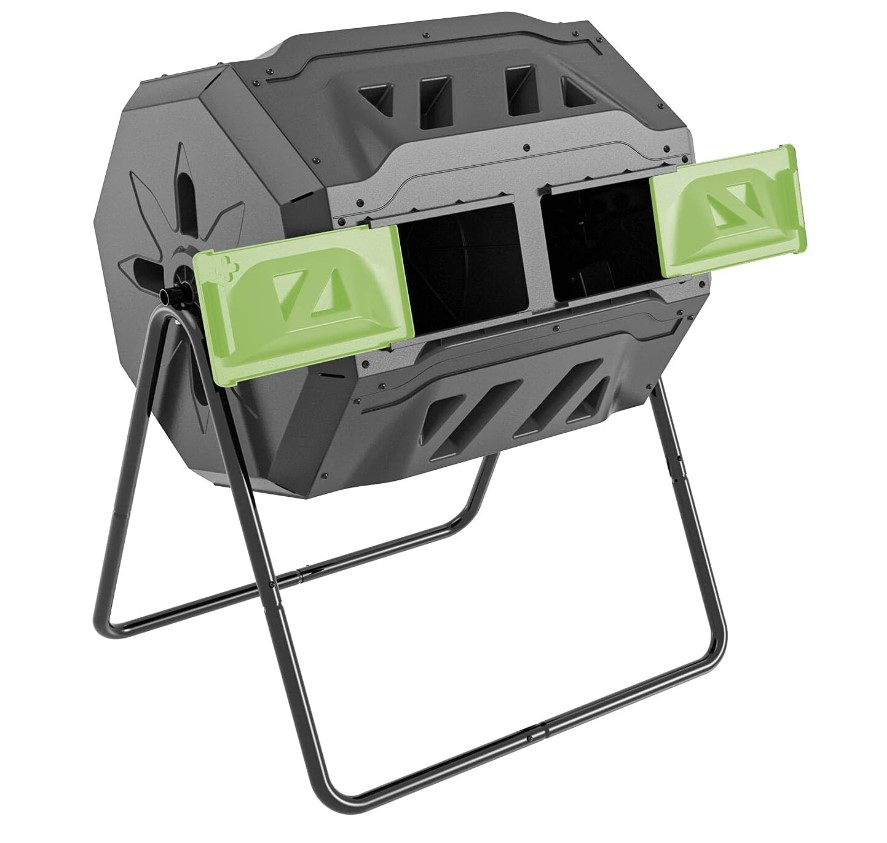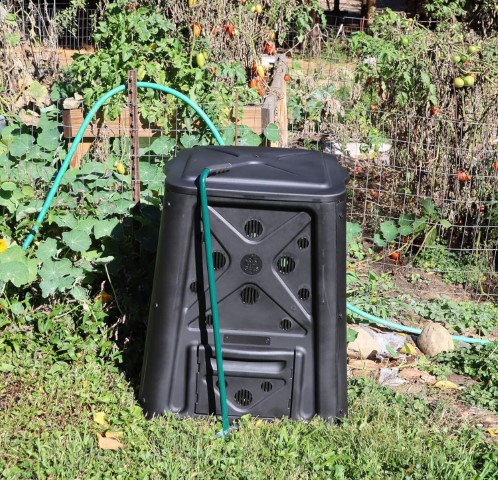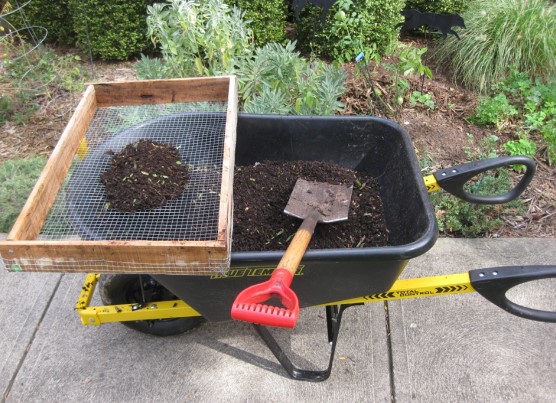Introduction
Composting is the most fulfilling garden activity, that is easy to do in your backyard, and helps diverting your kitchen waste from going landfills.
To compost, you will need a compost bin or pile, as well as a variety of organic materials. Organic materials can be divided into two categories: browns and greens.
Why Compost?
Organic kitchen waste, put in trash produces more methane in the landfills. Composting helps reduce these emissions from landfills, promotes biodiversity, improves soil quality, while reducing plant diseases and pests.
Compost Bin
There are two popular types of compost bin: Tumbler bins and Static In-ground Bins. Each one has its own advantages. The in-ground ones are recommended by compost experts, as the organic materials are in direct contact with the ground and has easy access to the micro organisms. For tumblers, you need a starter soil rich in microbes, but mixing is easy.

Tumbler Style Bin

In-ground Bin
Browns and Greens
The organic materials needed for composting is browns and greens. For 1 part of greens, you need 3 parts of browns. Just, put the greens and completely cover the greens generously with the browns. That will give approximately 3:1 ratio. Your compost bin has to be moist, but not too wet and if you put your hands, it should be warm. If its too dry, you can add water.
Browns are carbon-rich materials, such as: dry leaves, straw, shredded paper, human / pet hairs, wood chips and saw dust, greasy pizza boxes, greasy paper plates etc.
Greens are your kitchen wastes like coffee or tea grounds, teabags, banana peels, vegetable peels, rotten fruit / vegetables, crushed egg shells. CAUTION: Do not put cooked food, meet, cheese or egg (egg shells ok).
Finished Compost

In Summer compost will be ready in about 6 weeks. If you using an in-ground compost bin, you can start taking the finished compost, through the opening in the bottom. For tumbler style, there is a 2 weeks waiting period, for the whole drum to be composted. In winter, you can still keep dumping greens and browns, but the process will be very slow.
Finished Compost is very rich in nutrients. You can feed your garden and trees. If you have more left, you can spread it in your lawn.
Conclusion
We transformed our kitchen waste, into healthy nutrients and sending back to the soil. How good that would feel. Happy Composting!